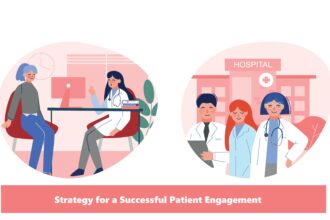 Only five years ago, what doctors recognized as the business of “being in practice,” is quite different from how things are today. For nearly everyone in the spectrum of care, healthcare delivery is changing, and will continue to do so. Marketing decisions will be shaped in a new way.
Only five years ago, what doctors recognized as the business of “being in practice,” is quite different from how things are today. For nearly everyone in the spectrum of care, healthcare delivery is changing, and will continue to do so. Marketing decisions will be shaped in a new way.
 Only five years ago, what doctors recognized as the business of “being in practice,” is quite different from how things are today. For nearly everyone in the spectrum of care, healthcare delivery is changing, and will continue to do so. Marketing decisions will be shaped in a new way.
Only five years ago, what doctors recognized as the business of “being in practice,” is quite different from how things are today. For nearly everyone in the spectrum of care, healthcare delivery is changing, and will continue to do so. Marketing decisions will be shaped in a new way.
Patients are informed and empowered; wearable technology is driving inroads in the health, fitness and medical records sector; eight out of ten patients want to connect with providers via their smartphone; seven out of ten physicians use e-prescribing; and digital doctor visits are beginning to take the place of some in-person encounters.
To some, it’s innovation. To others, it’s commoditizing medicine. And for just about everyone, five years from now health care delivery will be remarkably different.
The Immediate Care Trend
But among the quickly-emerging trends, one of the most significant changes appears likely to be in the sector that is presently labeled “urgent care.” It’s a growing category in healthcare—an alternative to the hospital emergency department (ED) and the family practitioner—that’s attracting patients with promises faster service, less hassle and lower costs.
As I look ahead, traditional family medicine practices are likely to be virtually obsolete five years from now as everyone in the primary care business will provide “immediate care” or they will fail.
The New York Times provides a real-world illustration about a Norwalk, CT, medical clinic where “all of the patients have one thing in common: No one is being treated at a traditional doctor’s office or emergency room.
“Instead, they have turned to one of the fastest-growing segments of American health care: urgent care, a common category of walk-in clinics with uncommon interest from Wall Street. Once derided as “Doc in a Box” medicine, urgent care has mushroomed into an estimated $14.5 billion business, as investors try to profit from the shifting landscape in health care.”
The three drivers are accessibility, affordability…and major investors.
The urgent care business has been growing for several years as service changes have made the typical ED less attractive and increasingly expensive. Accessibility and affordability give these clinics strong competitive and marketing advantages.
Unlike a doctor’s office, most clinics have open hours everyday of the week…no appointment needed. And unlike most Emergency Rooms, clinics have multiple, convenient locations where patients are seen and treated quickly, usually in about 30 minutes or less. In addition to convenience factors, the cost to the consumer is considerably less…by some estimates, only about 20 percent than the bill from the hospital ED.
But above and beyond the consumer advantages, the one factor that is accelerating growth in what Forbes labels “drive through health care” is the business model and the investors that have entered the game.
“The key is that the 10,000 urgent care clinics across the country, handling 160 million visits annually, are an appealing medical model wrapped up in a proven consumer-driven business plan,” says Forbes. “Put simply, urgent care is the first retail health play. The burgeoning $16 billion industry depends on location, customer service and brand, just like a restaurant or grocer.”
The significance of this trend, and the rapid growth of the urgent care sector, is certain to continue because of the backing of private equity investments, and purchases by insurance companies such as Humana buying Concentra, Dignity Health acquiring US Health Works, and others. [Reference: New York Times] In many areas, hospitals and health systems are also operating clinics, which have the added advantage of easing congestion in their Emergency Departments.
Competition is fierce in the field of urgent care…and it’s increasing. Given the depth of financial forces that are powering this trend, it seems highly likely that family practices are destined to become immediate care providers. Establishing an urgent care practice, however, can be an attractive business strategy.]








